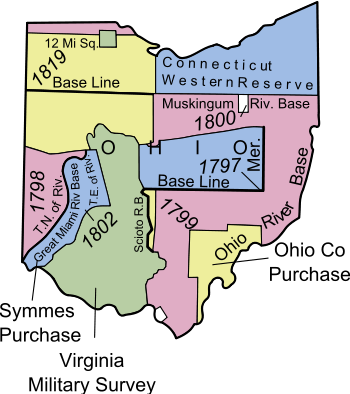Black River Colony
| Black River Colony Die Kolonie der Schwarzflüßen Brüder | |
|---|---|
| Religious colony | |
| Area | |
| • Coordinates | 41°S 81°W / 41°S 81°W |
| Population | |
| • 1852 | ~25 |
| • 1900 | ~150 |
| • 1945 | 37 |
| History | |
| • Preceded by | Connecticut Western Reserve |
| • Created | 1852 |
| • Abolished | 1946 |
| Status | Unincorporated community |
| Government |
Elder Council |
| • Type | Religious community |
| • Motto | Regnum Dei |
| Contained within | |
| • Bishop of Black River (1904-1928) | Aaron A.S. Browand |
| • Elder | Dr. Jacob Eslinger |
| • Elder | Harvey Brouse |
The Black River Brethren Colony, (German: Die Kolonie der Schwarzflüßen Brüder) was a religious community centered on the pious lifestyle of the German Baptist Brethren. For nearly a century, the settlement sought to provide a religious parallel to the local township system of government in Ohio, who self-separated from the secular world as did the Mennonites. They were commonly known as the Plain folk. When it was founded in 1852, it was mostly self-sufficient and isolated, hence the name Colony. By the 1880s, it had dissolved into nothing more than a social circle centered around the Black River Brethren Meetinghouse. Twenty years later, a new Elder Council was established under Bishop Aaron and until the Great Depression was an authoritative voice in Lorain and Medina Counties, across which the Colony sprawled. Influential leaders of the settlement included Michael Franks and Aaron Browand, founders, as well as Joseph S.L. Browand and John Dague.[1]
History
The region surrounding what would become Lorain and Medina Counties was first populated by New Englanders and families from New York, a migration promoted by the Connecticut Land Company, the federal government as the Northwest Territory, and the State of Ohio, after its admission in 1803. Medina County was organized in 1818, and Lorain in 1824. Beginning in the 1840s, many Pennsylvania Dutch took advantage of the lands opening up in the west and moved to the region, mostly from Lancaster, Pennsylvania and environs.[2] The Longenecker family, coming from a long line of German Brethren ministers, was the most prominent in the area, settling in Wayne County, Ohio. After a substantial German population had settled on the border of Medina and Lorain Counties, the family de Brouant founded Brucietum, a plantation dedicated to the welfare of the Brethren, and a Meetinghouse on the Black River's East Branch in 1852. Herr Jakob de Brouant was a wealthy landowner in Lancaster, the son of Josef Sieger de Brouant and Eleanor Anne Harrison Randolph, the most extensive planters in Pennsylvania before the War of 1812. De Brouant had married Athénaïs, Duchess of Dillange in 1826, but separated in 1846 following a religious conversion to Anabaptist principles. He sought to found a "Colony where the Brethren may live apart from the secular world, serving God as we deem fit."
Beginning in the 1870s, many families left for a similarly established colony on the Mississippi River in Whiteside County. Black River became an entity in name only a decade after Jakob de Brouant died in 1862, and his son Aaron left for Illinois in 1875. He returned, however in 1904, reestablishing the Elder Council and reinvigorating local Brethren with his vibrant ministry. The colony continued to lead congregants in political, religious and social affairs until the Great Depression, at which point families fled for economic reasons. On a national level, the Church of the Brethren suffered an exodus during this time as members began to feel greater affinity with religious progressivism. Bishop Aaron died in 1928 and the Elder Council was dissolved the next year. A church stands today on the site of the old meetinghouse, Black River Church of the Brethren.[3]
References
- ↑ Browand, J.S.L., "Introduction," History of the Black River Colony, Cleveland: World Publishing Company, 1946.
- ↑ Lorain County History, Lorain County Administration, Elyria, 2015.
- ↑ Black River Church of the Brethren, 2016.
